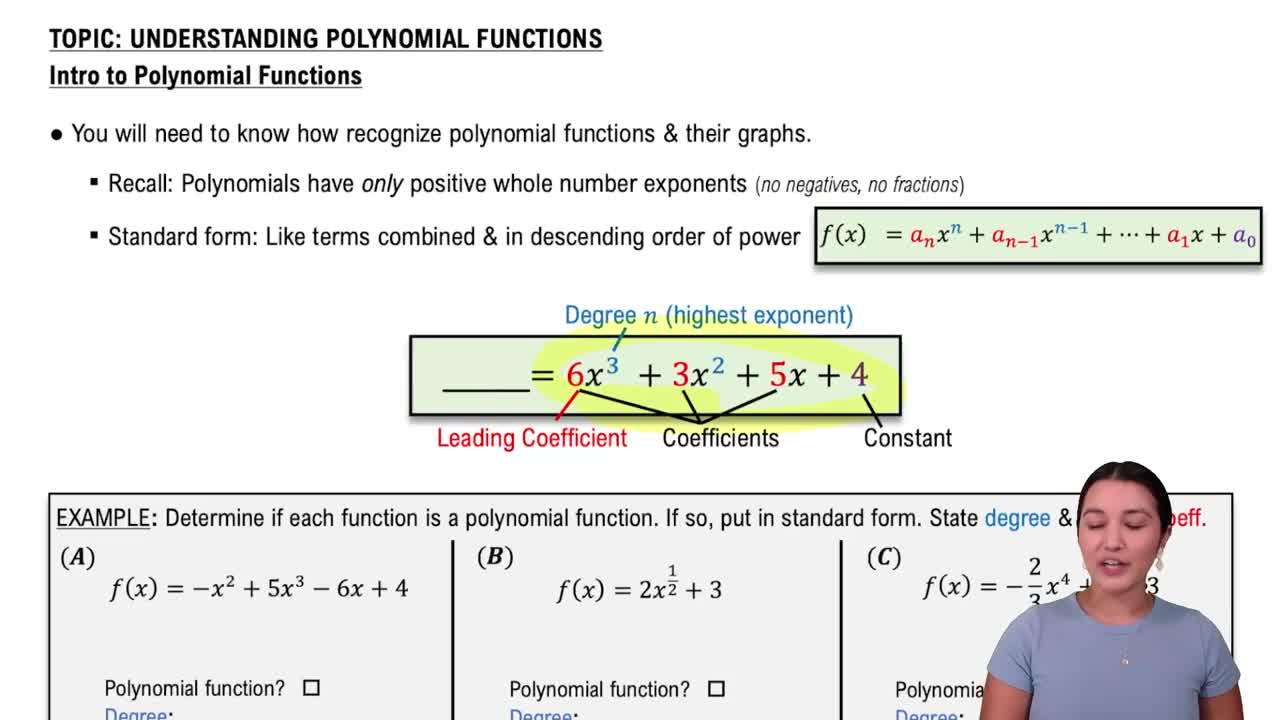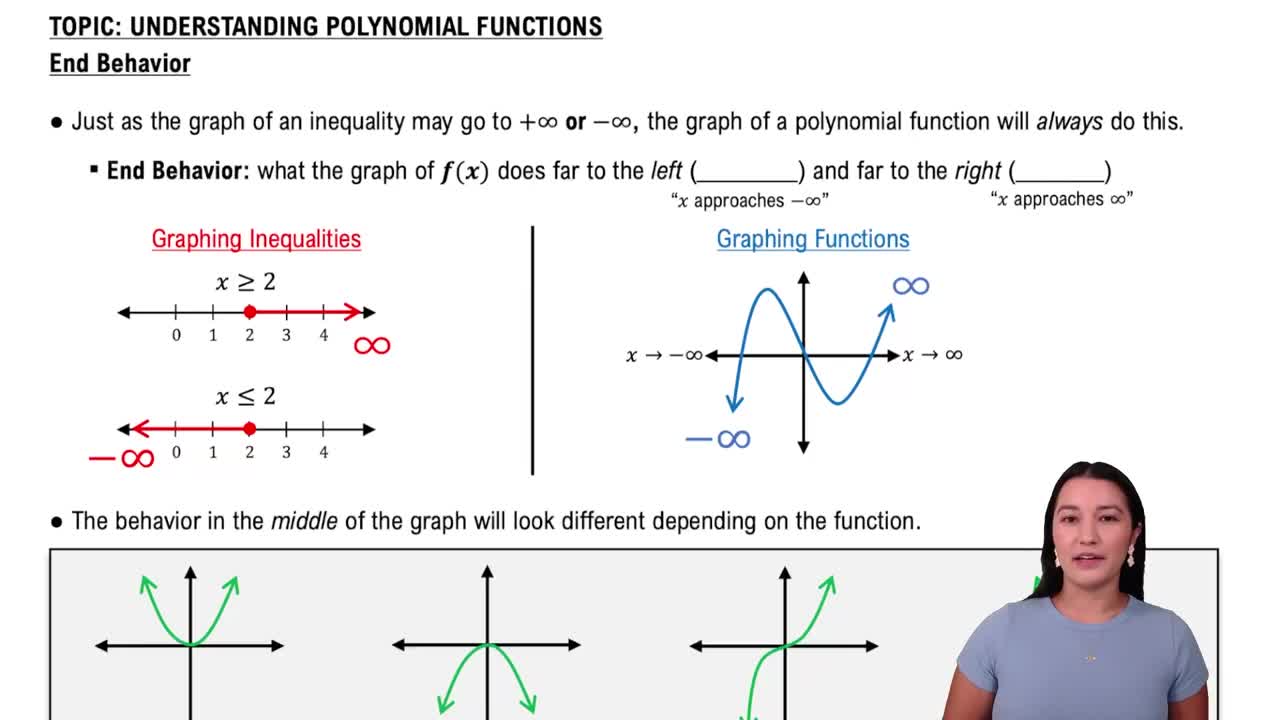Table of contents
- 0. Review of Algebra4h 16m
- 1. Equations & Inequalities3h 18m
- 2. Graphs of Equations43m
- 3. Functions2h 17m
- 4. Polynomial Functions1h 44m
- 5. Rational Functions1h 23m
- 6. Exponential & Logarithmic Functions2h 28m
- 7. Systems of Equations & Matrices4h 6m
- 8. Conic Sections2h 23m
- 9. Sequences, Series, & Induction1h 19m
- 10. Combinatorics & Probability1h 45m
4. Polynomial Functions
Understanding Polynomial Functions
Problem 47
Textbook Question
Graph each polynomial function. ƒ(x)=(x-2)^2(x+3)
 Verified step by step guidance
Verified step by step guidance1
Identify the zeros of the polynomial by setting each factor equal to zero: \((x-2)^2 = 0\) and \((x+3) = 0\).
Determine the multiplicity of each zero: \(x = 2\) has a multiplicity of 2, and \(x = -3\) has a multiplicity of 1.
Analyze the end behavior of the polynomial by considering the leading term. Since the polynomial is \(f(x) = (x-2)^2(x+3)\), expand it to find the leading term.
Plot the zeros on the x-axis: \(x = 2\) and \(x = -3\). Note that at \(x = 2\), the graph will touch the x-axis and turn around due to the even multiplicity, while at \(x = -3\), the graph will cross the x-axis.
Sketch the graph using the information about the zeros, their multiplicities, and the end behavior. The graph should start from the appropriate end behavior, pass through or touch the zeros, and continue to the other end behavior.
 Verified video answer for a similar problem:
Verified video answer for a similar problem:This video solution was recommended by our tutors as helpful for the problem above
Video duration:
8mPlay a video:
Was this helpful?
Key Concepts
Here are the essential concepts you must grasp in order to answer the question correctly.
Polynomial Functions
A polynomial function is a mathematical expression involving a sum of powers in one or more variables multiplied by coefficients. The general form is f(x) = a_n*x^n + a_(n-1)*x^(n-1) + ... + a_1*x + a_0, where n is a non-negative integer. Understanding polynomial functions is crucial for graphing, as their degree determines the number of roots and the overall shape of the graph.
Recommended video:

Introduction to Polynomial Functions
Factoring Polynomials
Factoring polynomials involves expressing a polynomial as a product of its simpler polynomial factors. In the given function f(x) = (x-2)^2(x+3), the factors indicate the roots of the polynomial, where the function equals zero. This process is essential for identifying x-intercepts and understanding the behavior of the graph at these points.
Recommended video:
Guided course

Introduction to Factoring Polynomials
Graphing Techniques
Graphing techniques for polynomial functions include identifying key features such as intercepts, turning points, and end behavior. For the function f(x) = (x-2)^2(x+3), one must plot the roots, determine the multiplicity of each root, and analyze how the graph behaves as x approaches positive or negative infinity. These techniques help create an accurate representation of the polynomial's behavior.
Recommended video:
Guided course

Graphs and Coordinates - Example

 6:04m
6:04mWatch next
Master Introduction to Polynomial Functions with a bite sized video explanation from Callie
Start learningRelated Videos
Related Practice


















